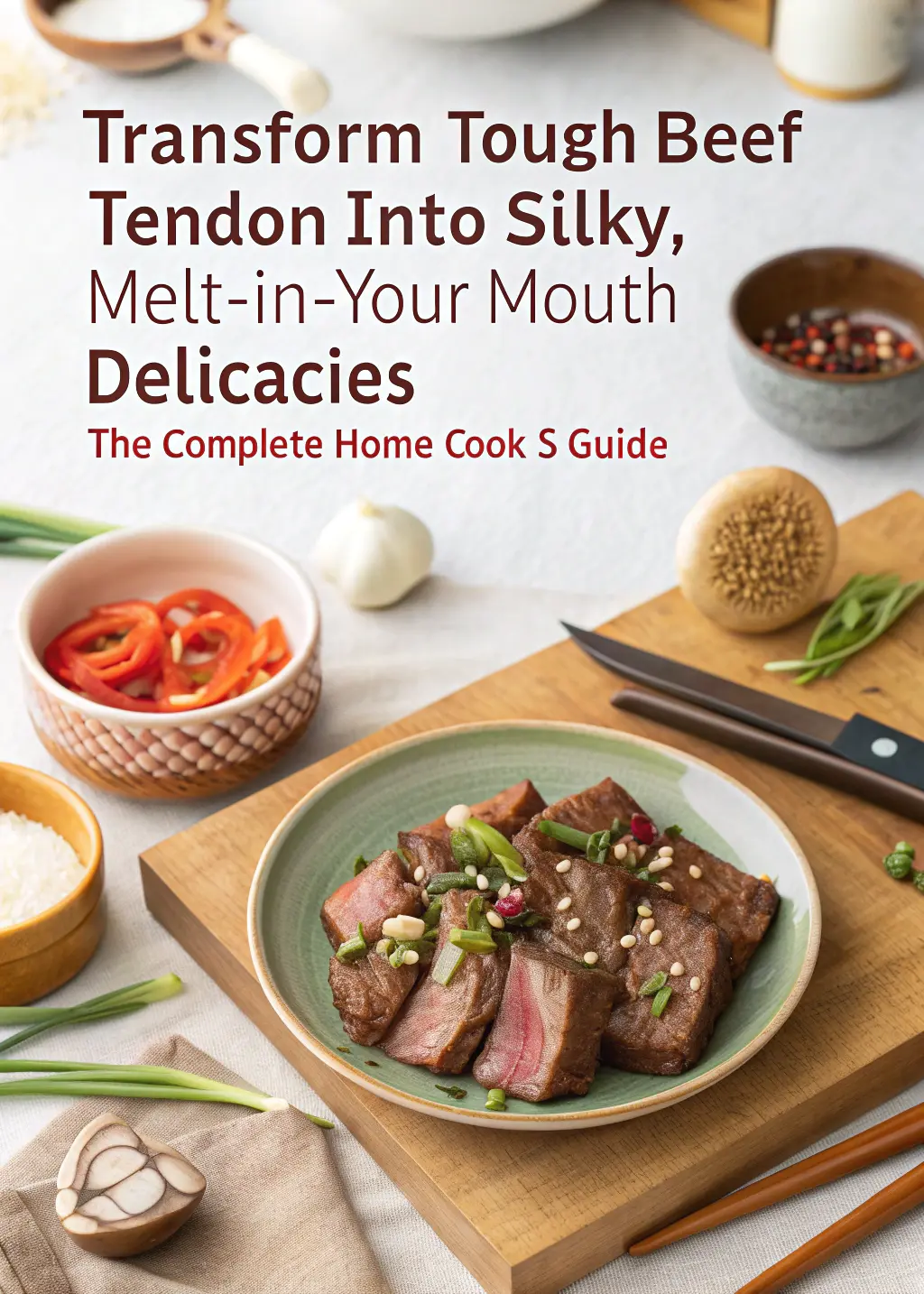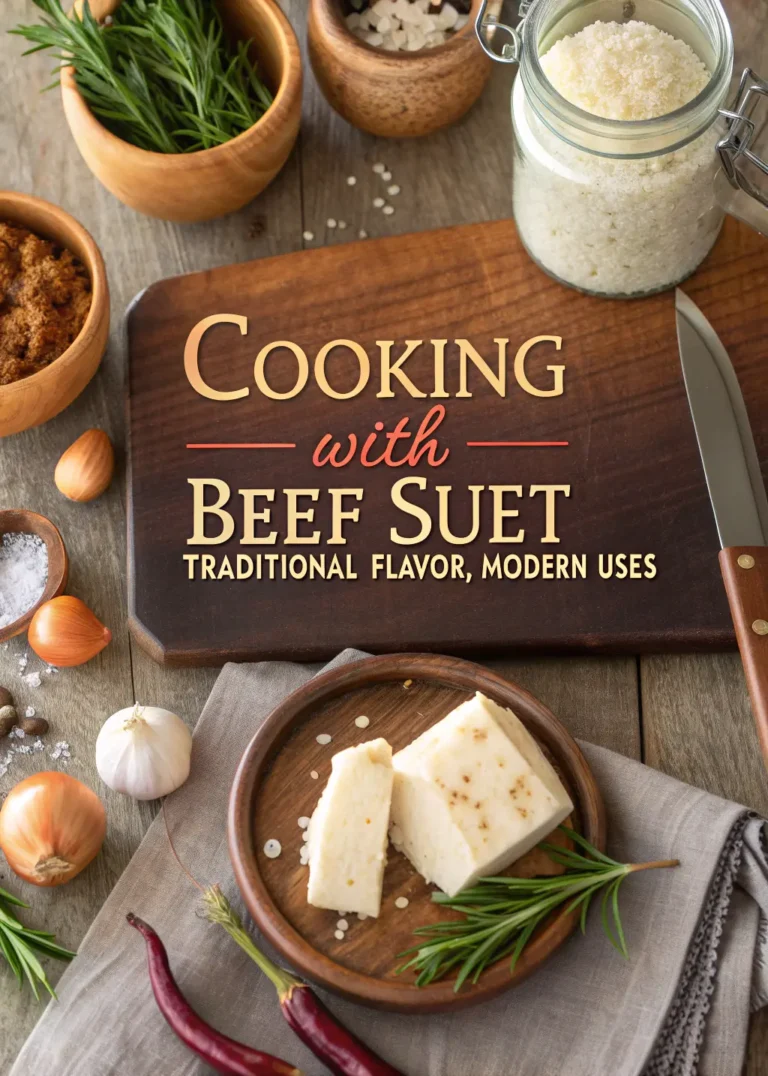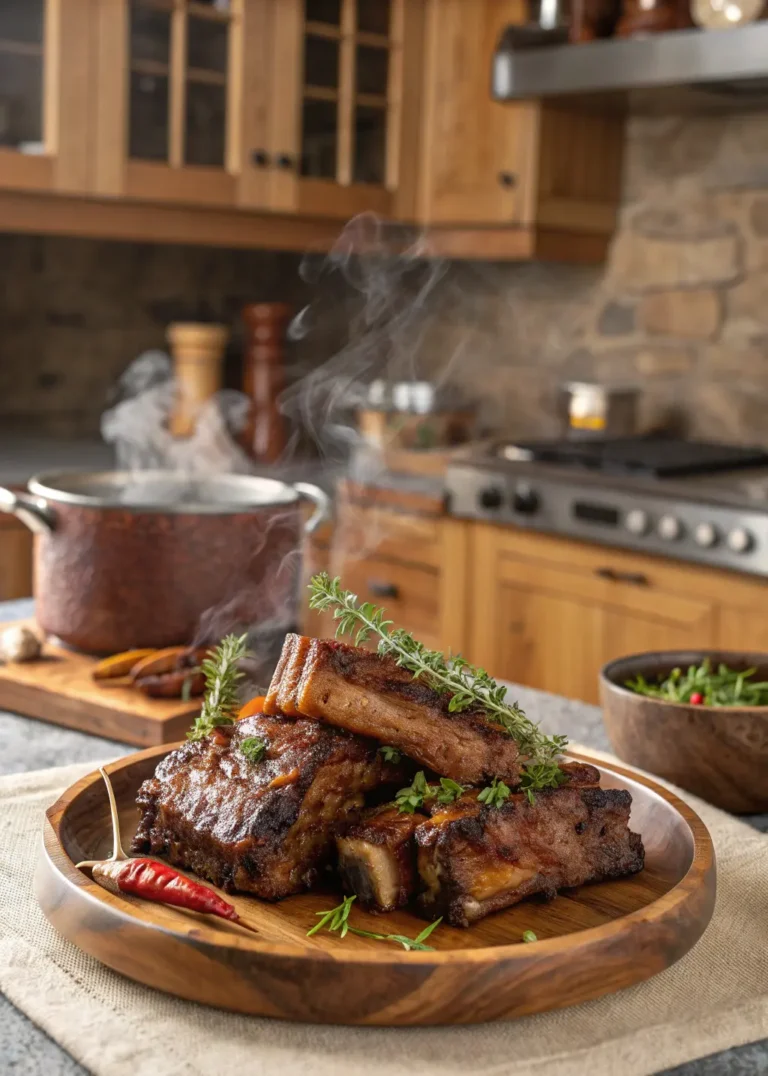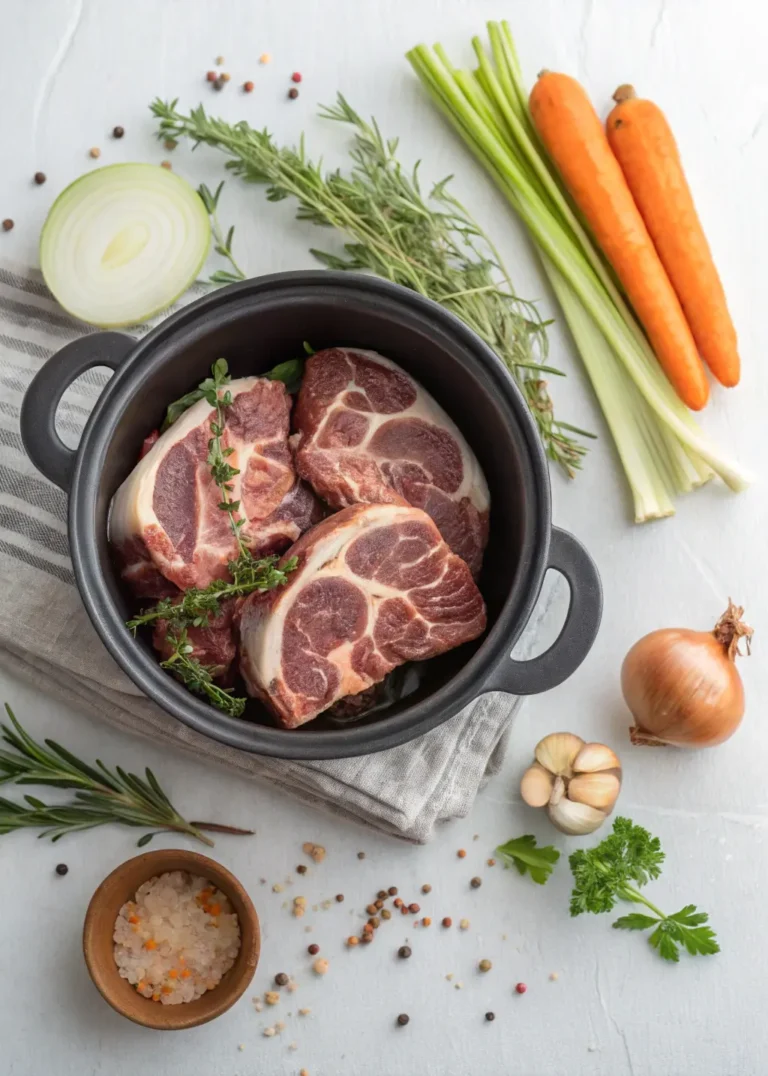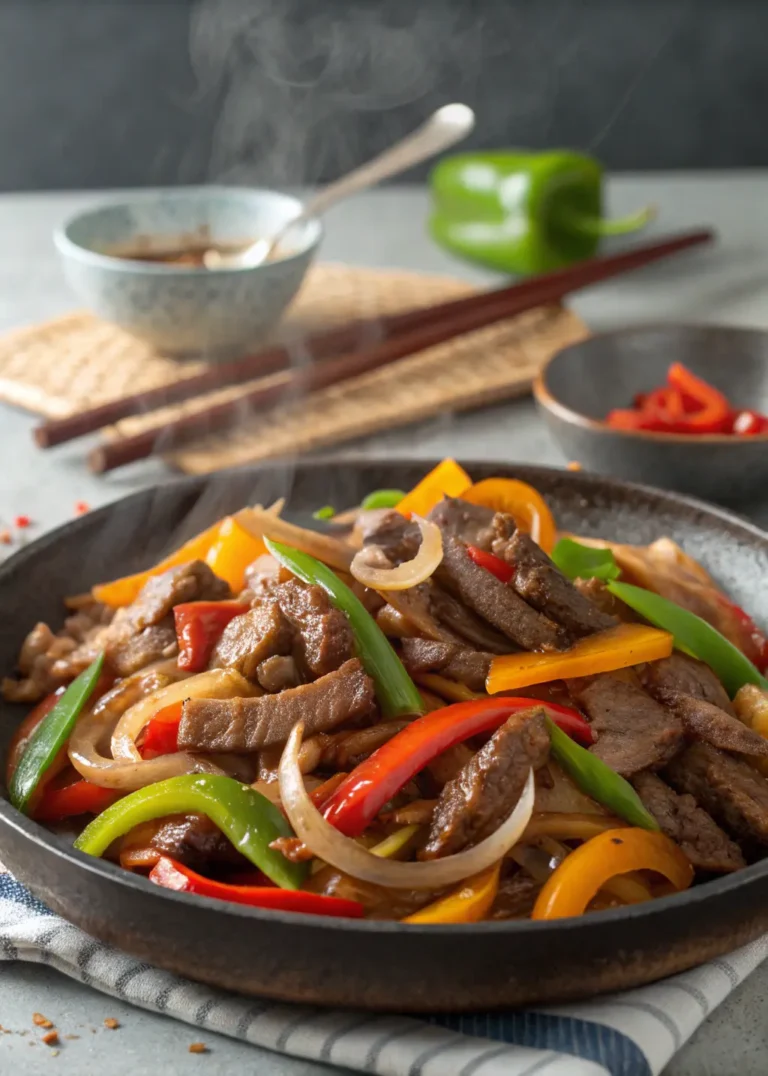Transform Tough Beef Tendon Into Silky, Melt-in-Your-Mouth Delicacies: The Complete Home Cook’s Guide
Picture yourself wandering through a vibrant Asian marketplace, drawn by an intoxicating aroma wafting from a modest food stall. The vendor presents you with a steaming bowl, and your first spoonful reveals something magical – tender, gelatinous beef tendon that dissolves on your tongue like culinary silk. Your immediate thought: “How can I recreate this extraordinary experience in my own kitchen?”
You’re about to discover that beef tendon, despite its intimidating reputation, represents one of cooking’s most rewarding challenges. This comprehensive guide will transform your approach to this remarkable ingredient, revealing techniques that professional chefs have perfected over generations. You’ll master the art of converting tough connective tissue into restaurant-quality delicacies that will astonish your dinner guests.
Table of contents
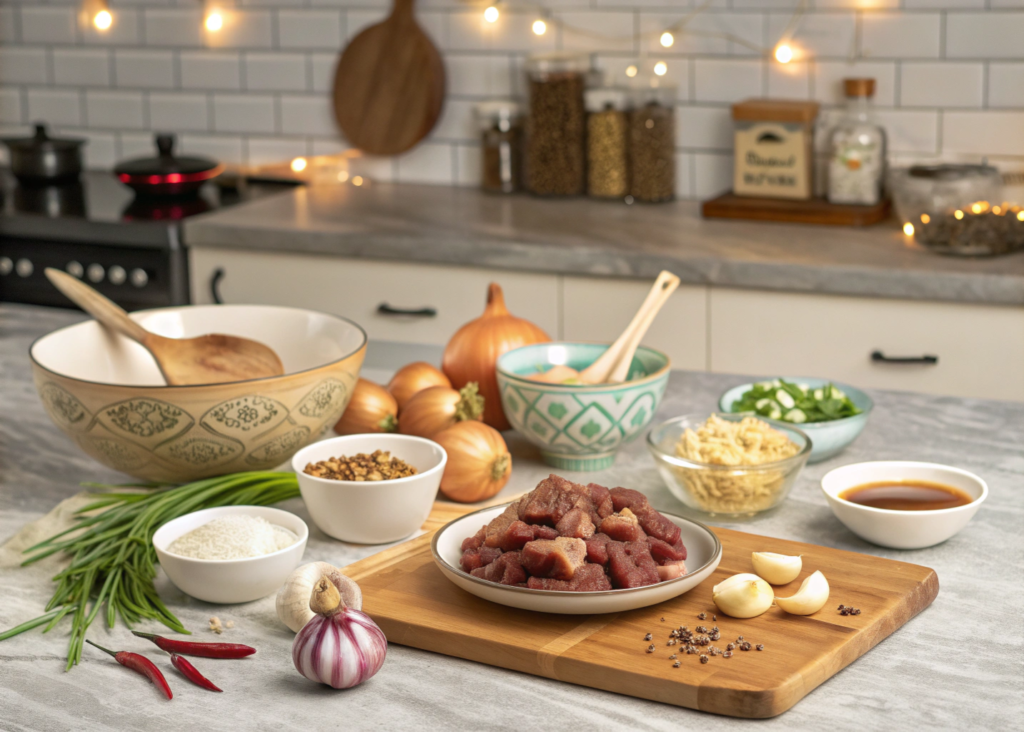
What Makes Beef Tendon a Culinary Treasure Worth Mastering
Understanding This Collagen-Rich Powerhouse
Beef tendon consists primarily of dense connective tissue that surrounds muscle groups in cattle. While initially tough and chewy, this seemingly challenging ingredient contains extraordinary amounts of collagen – the protein responsible for creating those luxurious, silky textures you’ve experienced in premium restaurants.
Your patience with beef tendon cooking pays dividends beyond mere taste. This ingredient offers exceptional nutritional value, delivering high-quality protein while remaining remarkably low in fat. The collagen content supports joint health, promotes skin elasticity, and provides essential amino acids your body craves.
Culturally, beef tendon holds revered status across multiple cuisines. Chinese cooks have perfected red-braised preparations spanning centuries. Korean families pass down sacred soup recipes featuring this prized ingredient. Vietnamese pho masters consider properly prepared tendon essential for authentic flavor profiles.
Health Benefits That Justify Your Investment
When you incorporate beef tendon into your regular cooking rotation, you’re choosing an ingredient that delivers impressive wellness advantages:
- Joint support: Natural collagen helps maintain cartilage health and flexibility
- Skin vitality: Regular collagen consumption may improve skin texture and appearance
- Protein efficiency: High biological value protein with minimal fat content
- Amino acid profile: Rich in glycine, proline, and hydroxyproline for cellular repair
- Cost effectiveness: Significantly cheaper than premium cuts while offering superior nutritional density
Essential Techniques for Beef Tendon Success
The Science Behind Perfect Results
Understanding collagen transformation represents the key to beef tendon mastery. Heat gradually breaks down tough collagen fibers into gelatin, creating that signature melt-in-your-mouth texture you’re seeking. This process requires specific temperature ranges (160-180°F) maintained over extended periods.
Your cooking method directly influences final texture and flavor development. Rapid, high-heat cooking produces rubbery, unpalatable results. Gentle, prolonged cooking allows complete collagen breakdown while preserving structural integrity.
Preparation Methods That Guarantee Success
Cleaning and Prepping Fresh Beef Tendon
Proper preparation sets the foundation for exceptional results. Follow these essential steps:
- Thorough rinsing: Remove surface impurities under cold running water
- Blanching process: Briefly boil for 2-3 minutes to eliminate residual blood
- Strategic cutting: Slice against the grain in 2-inch segments for even cooking
- Quality inspection: Discard any pieces showing discoloration or unusual odor
Choosing Your Cooking Method
| Method | Time Required | Texture Result | Difficulty Level |
|---|---|---|---|
| Pressure Cooking | 45-60 minutes | Very tender | Beginner |
| Slow Cooking | 6-8 hours | Extremely tender | Beginner |
| Traditional Braising | 3-4 hours | Perfect control | Intermediate |
Each approach offers distinct advantages. Pressure cooking delivers consistent results quickly, making it ideal for weeknight dinners. Slow cooking requires minimal attention while producing incredibly tender results. Traditional braising provides maximum flavor development and texture control.
Master Recipe: Classic Chinese Red-Braised Beef Tendon
This foundational recipe establishes your beef tendon cooking skills while delivering authentic flavors that rival professional kitchens.
Ingredients You’ll Need
| Ingredient | Quantity | Purpose |
|---|---|---|
| Fresh beef tendon | 2 pounds | Primary protein |
| Dark soy sauce | 1/4 cup | Color and umami |
| Light soy sauce | 2 tablespoons | Seasoning balance |
| Shaoxing cooking wine | 3 tablespoons | Tenderizing agent |
| Rock sugar | 2 tablespoons | Glaze and balance |
| Star anise | 3 whole pieces | Aromatic complexity |
| Fresh ginger | 2-inch piece | Flavor foundation |
| Scallions | 4 stalks | Fresh finish |
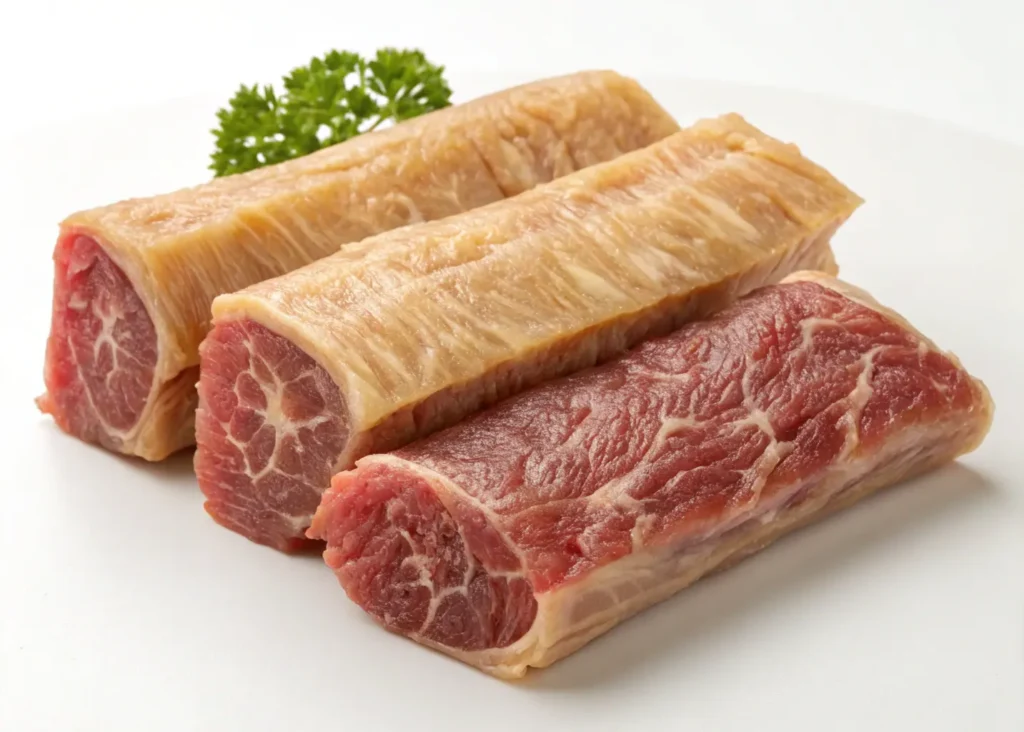
Step-by-Step Cooking Process
Phase 1: Preparation (30 minutes) Begin by cleaning your beef tendon thoroughly under cold water. Cut into uniform 2-inch pieces, ensuring consistent cooking. Blanch in boiling water for 3 minutes, then drain and rinse again.
Phase 2: Building Flavor Base (15 minutes) Heat your heavy-bottomed pot over medium heat. Add sliced ginger and white portions of scallions, cooking until fragrant. This aromatics foundation creates depth in your final dish.
Phase 3: Braising Process (2.5 hours) Add prepared beef tendon to your pot, followed by both soy sauces, cooking wine, rock sugar, and star anise. Add enough water to barely cover the ingredients. Bring to a gentle simmer, then reduce heat to maintain barely perceptible bubbling.
Phase 4: Final Adjustments (10 minutes) During the last 30 minutes, remove the lid to allow sauce reduction. Taste and adjust seasoning as needed. Your tendon should yield easily to chopsticks while maintaining structural integrity.
Expert Tips for Consistent Results
Common Mistakes to Avoid
Your success depends on avoiding these frequent pitfalls:
- Rushing the process: Insufficient cooking time creates chewy, unpalatable texture
- Excessive heat: High temperatures cause proteins to seize, preventing proper breakdown
- Early seasoning: Salt added too soon can toughen proteins before proper cooking
- Inadequate preparation: Skipping cleaning steps introduces unwanted flavors
Advanced Techniques for Flavor Development
Layered seasoning approach: Add aromatics in stages throughout cooking, building complexity gradually. Initial aromatics provide foundation flavors, while late additions preserve bright notes.
Temperature control mastery: Maintain consistent low temperatures using techniques like oven braising at 275°F for even heat distribution.
Storage and Meal Planning
Cooked beef tendon actually improves with time, making it perfect for meal preparation:
- Refrigeration: Store up to 5 days in cooking liquid for optimal moisture retention
- Freezing: Package in portions with sauce, freeze up to 3 months
- Reheating: Gentle warming prevents texture degradation
- Batch cooking: Prepare larger quantities for multiple meal applications
Where to Source Quality Beef Tendon
Finding the Best Ingredients
Your success begins with sourcing quality ingredients. Asian markets typically offer the freshest options, often featuring tendon from younger animals with superior texture potential. Look for pieces showing consistent color without dark spots or unusual odors.
Online suppliers provide convenient access, though you’ll sacrifice the ability to inspect before purchasing. Establish relationships with local butchers who can special-order fresh tendon, often at competitive prices.
Quality Assessment Criteria
Fresh beef tendon should exhibit:
- Pale pink to white coloration
- Firm, slightly elastic texture
- Clean, neutral aroma
- Minimal surface moisture
- No discoloration or dark spots
Frequently Asked Questions About Beef Tendon Cooking
How long does beef tendon require for proper cooking?
Your cooking time depends entirely on your chosen method. Traditional braising requires 3-4 hours of gentle simmering. Pressure cooking reduces this to 45-60 minutes, while slow cooking extends the process to 6-8 hours but requires minimal attention.
What should properly cooked beef tendon feel like?
Perfectly prepared beef tendon yields easily to chopsticks or fork pressure while maintaining its shape. The texture should feel slightly gelatinous and silky, never rubbery or chewy. When cooled, properly cooked tendon will have a slight jiggle due to converted gelatin.
Can you cook beef tendon without special equipment?
Absolutely! Your regular heavy-bottomed pot or Dutch oven works perfectly for traditional braising methods. The key lies in maintaining consistent low temperatures and allowing adequate cooking time rather than relying on specialized equipment.
Is beef tendon healthy for regular consumption?
Beef tendon offers excellent nutritional value with high protein content, beneficial collagen, and minimal fat. The natural collagen may support joint health and skin appearance. Like all foods, moderation ensures balanced nutrition while allowing you to enjoy these unique flavors regularly.
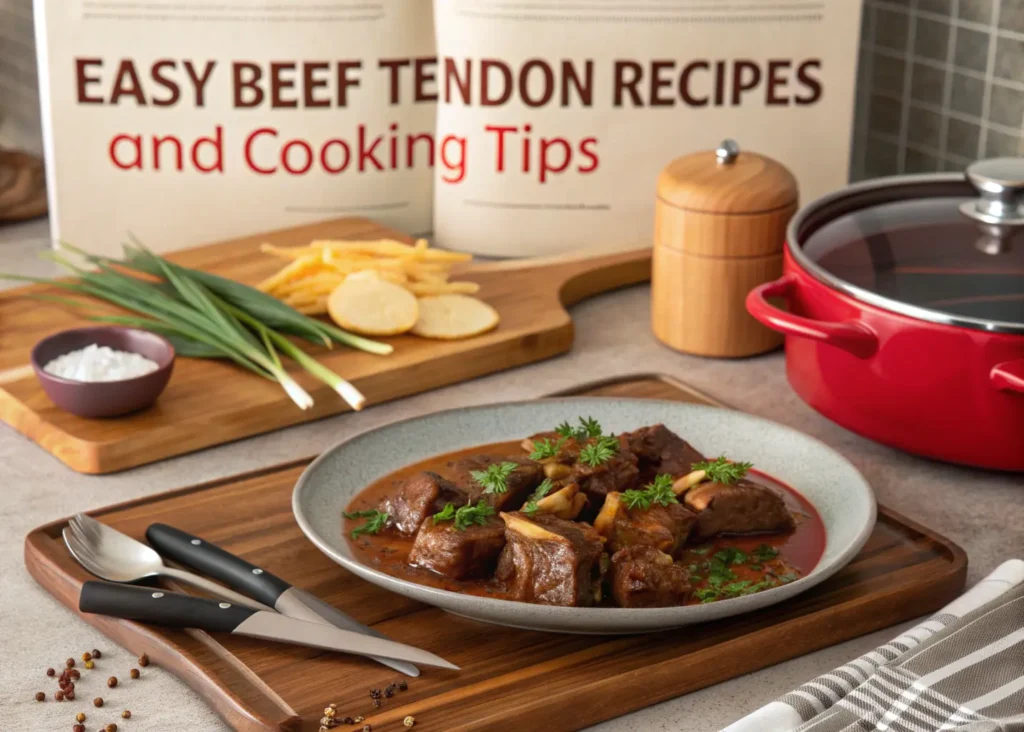
Your Next Steps Toward Beef Tendon Mastery
You now possess the knowledge and techniques necessary to transform this challenging ingredient into restaurant-quality delicacies. Start with the classic red-braised recipe to build your confidence, then explore variations that match your flavor preferences.
Remember that patience remains your greatest asset when working with beef tendon. The slow transformation from tough connective tissue to silky perfection cannot be rushed, but your persistence will be rewarded with extraordinary culinary results that will impress everyone fortunate enough to taste your creations.
Ready to begin your beef tendon journey? Gather your ingredients, set aside adequate time, and prepare to discover why this humble ingredient has captured the hearts of serious cooks worldwide. Your kitchen is about to become the source of some truly memorable meals that showcase your newfound expertise with this remarkable ingredient.
Share your beef tendon cooking experiences in the comments below – we’d love to hear about your successes, challenges, and creative variations as you master these time-honored techniques!
Have you given our recipe a try?
There are no reviews yet. Be the first one to write one.

